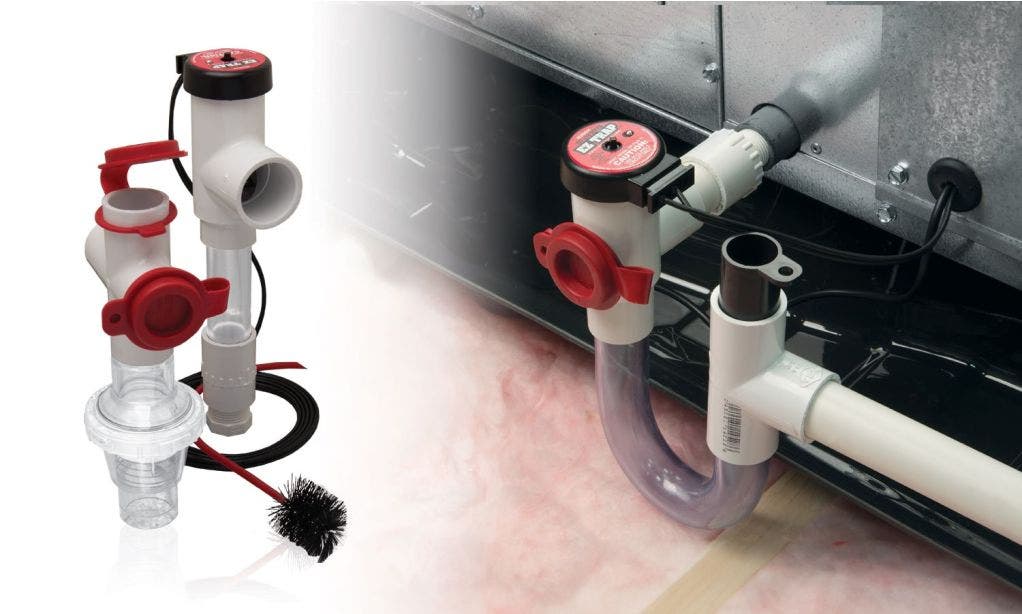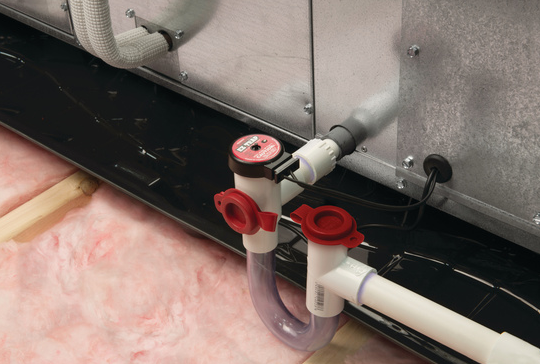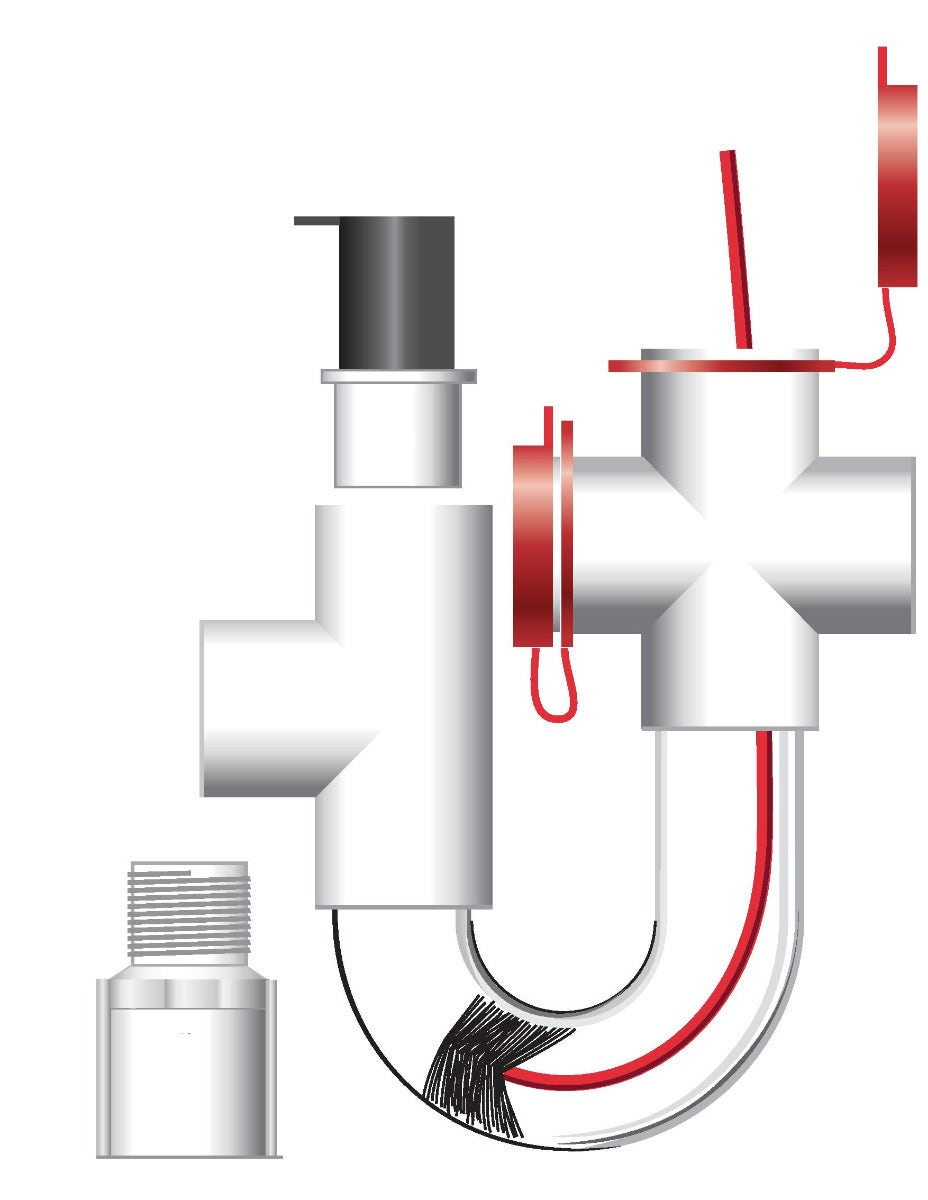When considering an HVAC system for a home or commercial setting, it's not just about ensuring that air flows correctly, it's also about ensuring unwanted elements like excess condensation and foul odors don't make their way back into the home. That's where specialized components like RectorSeal's EZ Trap provides a professional solution.
Functionality: How Does an EZ Trap Work?
Just like a p-trap in your plumbing system, the EZ Trap has been designed and engineered to create a barrier against undesirables such as excess water and odors. The trap is seamlessly integrated into your air conditioner's condensate drain line, and its unique design allows for a constant water seal, effectively preventing foul odors or gases from the conditioned space.
The transparent or translucent body of the EZ Trap allows you to easily visualize the contents of the trap, facilitating effortless inspections. You can check for potential issues like clogs or algae buildup without having to dismantle the entire assembly.
Pre-Installation Preparation
- Installation: Read all installation instructions and information provided by the manufacturer.
- Site Assessment: Before installing the EZ Trap, assess the layout of your HVAC system, particularly the condensate drain line where the trap will be installed.
- Tools and Materials: Make sure you have all the necessary tools and materials, such as a PVC cutter, tape measure, pipe & fittings.
- Safety Measures: Always turn off the HVAC system and wear safety gear, including gloves and goggles, before you begin the installation.
Step-by-Step Installation of an EZ Trap
- Measure the Condensate Line: With your measuring tape, determine the appropriate length for inserting the EZ Trap. Cut the PVC condensate line at the appropriate place using PVC cutters.
- Prep the Edges: Smooth the cut edges of the PVC line to ensure a secure and snug fit.
- Dry Fit: Before making any permanent adjustments, do a dry fit to ensure that the EZ Trap and the fittings align properly with the existing condensate line.
- Insert and Secure: Slide the EZ Trap onto the condensate line.
- Check for Leaks: Turn-on the HVAC system and let it run until condensate is flowing. Then, check to make sure there are no leaks. If any are found, make necessary adjustments.
- Optional Float Switch: If your EZ Trap model comes equipped with a float switch, connect it according to the manufacturer's instructions. This safety feature will shut down the HVAC system in the case of water backup, preventing any potential water damage.
- Final Inspection: Once everything is securely connected, turn on the HVAC system and perform a final inspection to make sure everything is functioning correctly.
Different Models and Features
Basic Model
- Provides standard trapping functions and is generally easier to install.
Float Switch Equipped
- Comes with an integrated float switch for protection against water damage.
Model with Cleaning Ports
- Includes easy-access ports for simpler maintenance and cleaning.
Material Choices
EZ Traps are crafted from high-quality plastic materials that are corrosion-resistant and easy to handle:
- Standard Plastic Models: Lightweight and corrosion-resistant. Ideal for general applications.
- Specialized Material Models: For particular applications or environments, specialized material may be used to enhance durability and longevity.
Maintenance Tips
Regularly inspect the transparent or translucent section of the EZ Trap for signs of clogs, debris, or algae growth. While these units are designed for minimal upkeep, regular visual inspections will go a long way in ensuring the efficiency and longevity of your HVAC system's condensate drain ensuring HVAC system operating efficiency.
Please visit www.rectorseal.com for additional details, and follow us on LinkedIn, Facebook, YouTube, Instagram, and Twitter for the latest product enhancements and news.



